Understanding the Basics of Reading Natal Charts can be a fascinating yet complex endeavor. Many people are drawn to astrology as a way to gain deeper insights into themselves and others. Natal charts, also known as birth charts, serve as a snapshot of the skies at the moment of a person’s birth. These charts are like a cosmic blueprint that provides valuable information about an individual’s personality traits, strengths, weaknesses, and life experiences. In this article, we will explore the significance of natal charts and delve into the components that make up these intricate astrological maps. We will also discuss how to interpret natal charts, explore different techniques for calculating and generating them, and offer suggestions for enhancing your interpretation skills. Whether you are a beginner or have some experience with astrology, this article aims to provide you with a comprehensive guide to understanding and deciphering natal charts.
Contents
- What are Natal Charts?
- Interpreting Natal Charts
- Calculating and Generating Natal Charts
- Common Interpretation Techniques
- Enhancing Your Interpretation Skills
- Conclusion
-
Frequently Asked Questions
- What is the importance of understanding natal charts?
- How do natal charts differ from horoscopes?
- Can natal charts predict the future?
- What are the different components of a natal chart?
- How can I interpret zodiac signs in my natal chart?
- What role do planets play in natal charts?
- What are aspects in a natal chart?
- How can I calculate my natal chart online?
- What is the role of an astrologer in interpreting natal charts?
- How can I enhance my interpretation skills for natal charts?
- References
-
Frequently Asked Questions
- 1. What is the purpose of reading natal charts?
- 2. Are natal charts and horoscopes the same thing?
- 3. Can natal charts predict the future?
- 4. Do natal charts only focus on the Sun sign?
- 5. Can natal charts reveal compatibility between individuals?
- 6. How can I generate my own natal chart?
- 7. What are aspects in natal charts?
- 8. What are the key placements to look out for in a natal chart?
- 9. How can astrology beginners enhance their interpretation skills?
- 10. Do I need an astrologer to interpret my natal chart accurately?
- References
- Read More
What are Natal Charts?
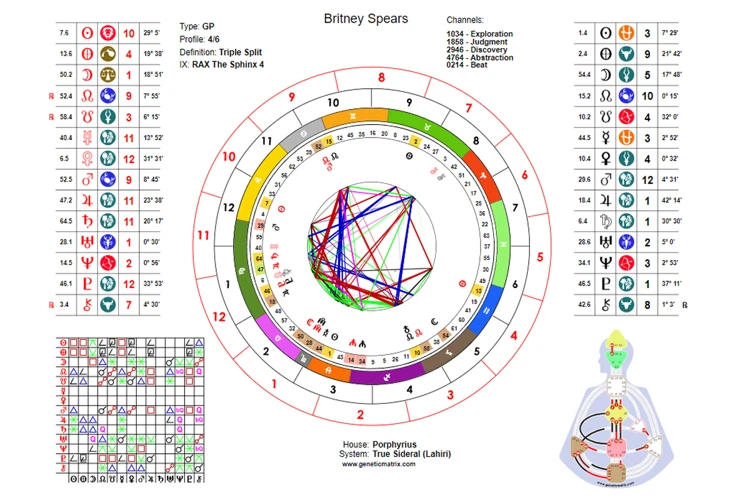
Natal charts, also known as birth charts, are astrology’s way of capturing a snapshot of the cosmic energies present at the exact moment of a person’s birth. These charts serve as a unique blueprint that provides a wealth of information about an individual’s personality, temperament, and life experiences. By mapping the positions of celestial bodies such as the Sun, Moon, planets, and other astrological points at the time of birth, natal charts reveal the potential influences and energies that shape a person’s life. Each natal chart is unique to an individual, just like a fingerprint, and it acts as a symbolic representation of the person’s life path and character traits. The significance of natal charts lies in the belief that the position of celestial bodies at the time of birth has a profound impact on an individual’s life journey and personal development. Understanding the components of a natal chart and learning how to interpret them can provide valuable insights into one’s personality, relationships, career choices, and life events.
The Significance of Natal Charts
The significance of natal charts lies in their ability to provide deeper insights into a person’s life and personality. By examining the positions of celestial bodies at the moment of birth, natal charts offer a glimpse into the potential influences and energies that shape an individual’s journey. Here are some key reasons why natal charts hold such importance:
1. Self-discovery: Natal charts can serve as a powerful tool for self-reflection and self-understanding. By analyzing the unique placements of planets and astrological points, individuals can gain insights into their strengths, weaknesses, and life purpose. It allows them to recognize their innate talents and areas for personal growth.
2. Relationship dynamics: Natal charts can provide valuable information about how individuals interact with others. Comparing the charts of two people can reveal insight into compatibility, potential challenges, and opportunities for growth within a relationship. Understanding the astrological aspects between individuals can lead to improved communication and a deeper understanding of each other’s needs and tendencies.
3. Life events and timing: Natal charts can offer insights into major life events and important periods of growth. Astrologers can analyze planetary transits and progressions to determine when significant changes or opportunities may arise. This can assist individuals in making informed decisions and understanding the larger cycles and patterns affecting their lives.
4. Personal development: The knowledge gained from natal charts can be used as a tool for personal growth and development. By embracing their unique astrological strengths and working on areas that may pose challenges, individuals can navigate life with a greater sense of purpose and fulfillment.
It’s important to note that while natal charts offer valuable insights, they are not deterministic. They provide a framework of potentials and possibilities, and individuals have the power of free will to make choices that shape their lives. By understanding the significance of natal charts and working with them as a guiding tool, individuals can gain a deeper understanding of themselves and navigate life’s challenges with greater clarity and self-awareness.
The Components of a Natal Chart
The components of a natal chart are the building blocks that make up this intricate astrological map. The most essential elements include the Sun, Moon, and Rising signs, which represent the core aspects of an individual’s personality. The Sun sign reflects one’s basic identity and ego, representing the essence of who they are at their core. The Moon sign, on the other hand, is associated with emotions, instincts, and subconscious patterns. The Rising sign, also known as the Ascendant, is the zodiac sign that was rising on the eastern horizon at the moment of birth and represents the outward persona and first impressions. In addition to these key components, other planets and astrological points play a significant role in shaping a person’s natal chart. These include Mercury, Venus, Mars, Jupiter, Saturn, Uranus, Neptune, and Pluto, each representing different aspects of an individual’s personality, talents, and life experiences. The houses, which are twelve sectors of a natal chart, represent different areas of life, such as relationships, career, and spirituality. Each house is ruled by a particular zodiac sign, further influencing the interpretation of the natal chart. Finally, aspects, which are the angular relationships between planets, offer insights into the dynamics and connections between different elements of the chart. Understanding the components of a natal chart is crucial for interpreting and extracting meaningful insights from this powerful astrological tool.
Interpreting Natal Charts
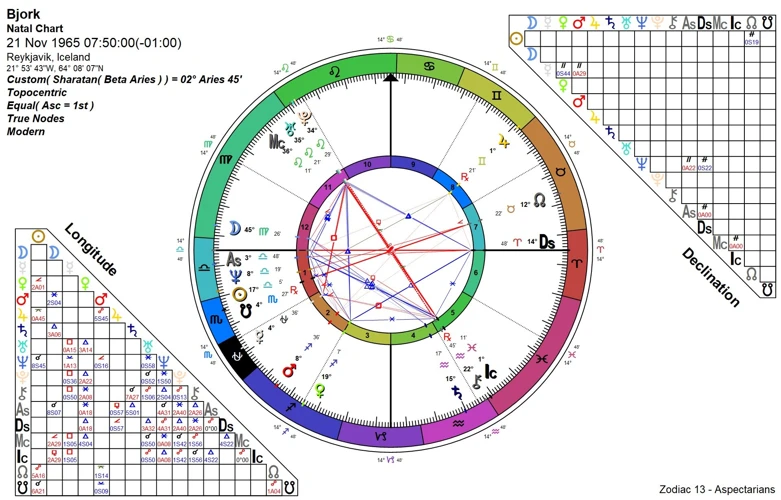
Interpreting natal charts is an intricate process that involves understanding the various elements and symbols within the chart. One of the key components of interpreting natal charts is analyzing the zodiac signs and houses. The zodiac signs represent different personality traits and characteristics, while the houses indicate different realms of life, such as career, relationships, and personal development. By examining the placement of planets within these signs and houses, astrologers can gain insights into an individual’s strengths, weaknesses, and life experiences. Another crucial aspect of natal chart interpretation is understanding the planets and their meanings. Each planet represents a different energy or facet of life, and their placement within the chart provides clues about how these energies manifest in an individual’s life. Aspects and angular relationships between planets play a vital role in chart interpretation. Aspects indicate the dynamic interplay between planetary energies, while angular relationships highlight significant connections and patterns within the chart. By considering these aspects and angles, astrologers can uncover deeper insights into an individual’s personality, relationships, and life events. When interpreting natal charts, it is essential to consider the unique combination of these elements and their interactions for a comprehensive understanding of a person’s astrological makeup.
Zodiac Signs and Houses
Zodiac signs and houses play a crucial role in interpreting natal charts. The zodiac is divided into 12 equal parts, known as signs, each representing different personality traits and characteristics. These signs are based on the position of the Sun at the time of birth. Each sign has its own unique qualities and influences how individuals express themselves and interact with the world. The houses, on the other hand, represent different areas of life in which these zodiac energies manifest. There are 12 houses in a natal chart, each corresponding to an area such as relationships, career, home, and spirituality. The placement of planets within these houses provides further insight into a person’s experiences and challenges in specific life domains. For example, if Mercury is located in the 7th house, it may indicate a focus on communication and partnerships in intimate relationships. Understanding the interactions between zodiac signs and houses can help astrologers paint a more accurate and detailed picture of an individual’s personality, strengths, and areas for growth. It is important to note that interpretation of zodiac signs and houses should be done holistically, taking into account the entire natal chart as a comprehensive system. To delve deeper into the influence of zodiac signs in ancient Greek and Roman astrology, you can read more about them in our article on the influence of Zodiac signs in ancient Greek and Roman astrology.
Planets and Their Meanings
In astrology, the planets play a crucial role in interpreting and understanding natal charts. Each planet holds its own unique energy and symbolism, which influences different aspects of an individual’s life and personality. Let’s explore the meanings associated with the planets:
1. The Sun (Sun): The Sun represents our core essence, vitality, and ego. It signifies our individuality, self-expression, and aspirations. It is associated with our identity, leadership abilities, and the conscious mind.
2. The Moon (Moon): The Moon represents our emotions, subconscious mind, instincts, and intuition. It influences our nurturing qualities, needs for security, and emotional well-being. The Moon also governs our habits, memories, and how we respond to our environment.
3. Mercury (Mercury): Mercury represents communication, intelligence, and thought processes. It rules over our mental abilities, including how we express ourselves, gather information, analyze situations, and make decisions. It also influences our adaptability and tendency for curiosity.
4. Venus (Venus): Venus is associated with love, relationships, beauty, and harmony. It governs our sense of aesthetics, values, and attraction towards others. Venus also influences our social interactions, romantic partnerships, and our capacity to give and receive love.
5. Mars (Mars): Mars represents energy, passion, motivation, and assertiveness. It governs our drive, ambition, and physical vitality. Mars influences our determination, courage, and how we assert ourselves to achieve our desires and goals.
6. Jupiter (Jupiter): Jupiter is often referred to as the planet of expansion and growth. It represents wisdom, abundance, expansion, and opportunities. Jupiter influences our beliefs, optimism, spiritual pursuits, and our capacity to broaden our horizons.
7. Saturn (Saturn): Saturn is associated with discipline, responsibility, structure, and limitations. It represents the lessons and challenges we encounter in life that ultimately lead to growth and maturity. Saturn also governs our sense of duty, boundaries, and long-term goals.
8. Uranus (Uranus): Uranus represents innovation, individuality, and unconventional thinking. It symbolizes change, rebellion, and the breaking free from societal norms. Uranus influences our need for freedom, originality, and how we embrace uniqueness.
9. Neptune (Neptune): Neptune is associated with spirituality, dreams, and illusions. It represents our imagination, creativity, and ability to connect with the unseen realms. Neptune also governs our intuition, compassion, and our capacity for escapism or deception.
10. Pluto (Pluto): Pluto represents transformation, power, and deep inner change. It governs themes of death and rebirth, regeneration, and the subconscious mind. Pluto influences our ability to undergo profound personal growth, let go of the past, and embrace transformation.
Understanding the meanings and influences of each planet in a natal chart allows astrologers to gain deeper insights into an individual’s character, motivations, and life experiences. By analyzing the placements and aspects of the planets, astrologers can provide valuable guidance on how to navigate challenges, harness strengths, and embrace opportunities for personal growth.
Aspects and Angular Relationships
Aspects and angular relationships play a crucial role in interpreting natal charts. Aspects refer to the angles formed between celestial bodies within a chart, revealing the energetic connections and influences between them. These aspects can be classified into major and minor aspects, each carrying its own symbolic meaning and impact. The major aspects include the conjunction, opposition, trine, square, and sextile, while the minor aspects encompass the quincunx and semisextile. Conjunctions occur when two or more celestial bodies are closely positioned together, blending their energies and amplifying their effects. The opposition aspect occurs when two celestial bodies are directly opposite each other in the chart, creating a dynamic tension and a need for balance. Trines form when celestial bodies are approximately 120 degrees apart, indicating harmony, ease, and support in their energies. Squares represent a challenging aspect, occurring when celestial bodies are approximately 90 degrees apart, signifying tension, obstacles, and growth opportunities. Sextiles occur when celestial bodies are approximately 60 degrees apart, symbolizing opportunities for growth and creative collaboration. These aspects provide valuable insights into an individual’s personality dynamics, potential strengths, and areas of challenge. Understanding the intricate web of aspects within a natal chart can shed light on the complex interplay of energies and how they shape an individual’s life journey. It’s important to consider the aspects within the context of the houses and zodiac signs they fall into, as this adds further depth to their interpretation. By analyzing the aspects and angular relationships within a natal chart, astrologers can uncover patterns, strengths, challenges, and potential life themes that are unique to each individual.
Calculating and Generating Natal Charts
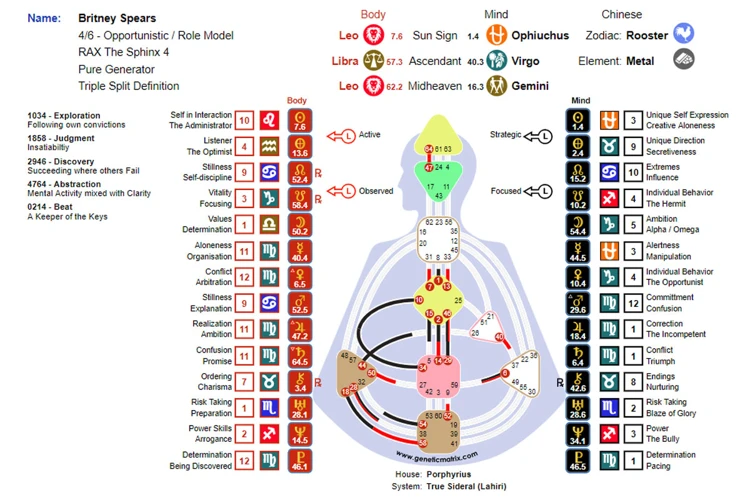
When it comes to calculating and generating natal charts, there are several methods and resources available. The easiest and most convenient way to obtain a natal chart is through free online resources. These websites allow you to input your birth details, such as your date, time, and place of birth, and in return, they generate a personalized natal chart. Some popular websites for generating natal charts include AstroSeek, Astro.com, and Cafe Astrology. These websites use advanced astrological algorithms to calculate the positions of celestial bodies at the time of your birth and generate a comprehensive natal chart. Another option for obtaining natal charts is to consult professional astrologers who are skilled in the art of chart calculation. They can create customized birth charts and offer detailed interpretations based on your unique astrological profile. In ancient times, astrologers had to manually calculate natal charts using intricate mathematical formulas. However, with the advancement of technology, generating natal charts has become much more accessible to the general public. Whether you choose to use online resources or consult an astrologer, natal charts serve as powerful tools for self-discovery and gaining insights into various aspects of your life.
Free Online Resources
Free online resources have made it easier than ever to access and generate natal charts. There are numerous websites and astrology platforms that offer free tools and services for calculating and generating natal charts. These resources typically require the individual to input their birth information, such as date, time, and location of birth, and the software or website will then generate a detailed natal chart. Some popular online resources for natal chart calculations include Astrodienst, AstroSeek, and Cafe Astrology. These platforms provide comprehensive interpretations of natal charts, highlighting the positions of planets, aspects, and other astrological points. Additionally, many online resources offer further insights into specific zodiac signs, house placements, and planetary meanings, enabling individuals to delve deeper into their natal chart analysis. It’s important to note that while these online resources can provide a wealth of information and a general understanding of natal charts, seeking the guidance of a professional astrologer can offer a more personalized and nuanced interpretation of the chart. It’s advisable to use online resources as a starting point and consider consulting with an astrologer for a more in-depth analysis.
The Role of Astrologers
The role of astrologers in interpreting natal charts is crucial in helping individuals gain a deeper understanding of themselves and navigate their life paths. Astrologers are skilled practitioners who analyze the complex symbolism and patterns within natal charts to provide insightful interpretations. They possess a deep knowledge of astrology and its various branches, including the zodiac signs, planetary influences, and aspects. Astrologers use their expertise to decipher the connections between different components of a natal chart and provide guidance on relationships, career choices, and life events. Their role goes beyond simply reading the placements of celestial bodies; they also take into account the unique dynamics and interactions between these elements. Astrologers often have extensive experience and training, and their interpretations are based on their expertise and intuition. Their guidance can help individuals navigate challenges, embrace opportunities, and gain a greater understanding of their life’s purpose. While individuals can explore their own natal charts, consulting with an astrologer can offer deeper insights and a more personalized interpretation.
Common Interpretation Techniques
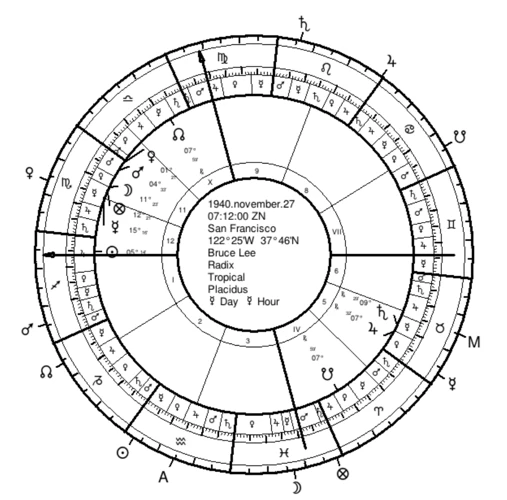
Common interpretation techniques are used to further analyze and understand natal charts, providing a deeper level of insight into an individual’s astrological makeup. One technique involves examining the shape of the chart and identifying key placements of planets and points. The shape of the chart, such as a stellium (a cluster of planets in one area of the chart) or a grand trine (an equilateral triangle formed by interconnected planets), can highlight specific areas of focus and potential strengths or challenges in a person’s life. Additionally, understanding aspect patterns and dynamics within the chart is crucial. Aspects refer to the angular relationships between planets, such as conjunctions, squares, and trines, which provide information about the interaction and influence of different planetary energies. These patterns can indicate areas of harmony, tension, or potential blockages in an individual’s life. By analyzing the chart’s shape and identifying significant aspect patterns, astrologers can further refine their interpretations and provide a more comprehensive analysis of an individual’s natal chart.
Chart Shape and Key Placements
The shape of a natal chart and the placement of key elements within it can offer valuable insights into an individual’s life patterns and potential strengths and challenges. One common consideration is the distribution of planets throughout the natal chart, which can create distinct shapes such as a bowl, bucket, or T-square. Each shape indicates different personality traits and focuses in an individual’s life. For example, a bowl-shaped chart suggests a person who is self-contained and focused on their own experiences and goals. On the other hand, a bucket-shaped chart may indicate someone who is driven by a singular purpose or mission. Another aspect to consider is the placement of key celestial bodies, such as the Sun, Moon, and Ascendant, also known as the Rising sign. The Sun represents one’s core essence and personality, while the Moon reflects emotions and inner needs. The Ascendant represents the external facade and how an individual presents themselves to the world. Understanding the interplay between these key placements can provide deeper insights into one’s motivations, aspirations, and self-expression. By analyzing the shape of the natal chart and the placement of these key elements, astrologers can unlock a wealth of information and help individuals understand their unique life path.
Aspect Patterns and Dynamics
Aspect patterns and dynamics in natal charts refer to the relationships and interactions between different celestial bodies. Aspects are geometric angles formed between planets, points, and other factors in the chart. These aspects create a dynamic web of energy that influences the individual’s life and personality. Understanding aspect patterns allows astrologers to gain deeper insights into the complex interplay of energies within a person’s chart.
One common aspect pattern is the conjunction, where two or more planets are in close proximity to each other. Conjunctions intensify the energies of the planets involved, merging their qualities and creating a powerful focus in the individual’s life. It signifies a blending of energies and can indicate areas of strength or challenge depending on the planets involved.
Another aspect pattern is the opposition, where two planets are placed directly across from each other. This brings a tension and dichotomy between the energies represented by the planets. Oppositions often manifest as inner conflicts or external encounters with others who represent contrasting qualities or values. Finding a balance between opposing forces becomes important to achieve harmony and growth.
Square aspects occur when two planets are approximately 90 degrees apart. These aspects symbolize tension, challenges, and opportunities for growth. Squares often bring about conflicts and difficulties, but they also provide the impetus for change and transformation.
Trine aspects, on the other hand, occur when two planets are approximately 120 degrees apart. Trines represent harmony, ease, and natural talents. They indicate areas of life where things flow effortlessly and signify innate abilities that the individual can tap into for success and fulfillment.
Lastly, sextile aspects occur when two planets are approximately 60 degrees apart. These aspects represent opportunities, cooperation, and positive interactions. Sextiles bring about favorable circumstances and indicate areas of potential growth and development.
Understanding aspect patterns and dynamics in a natal chart allows astrologers to see how different energies are interconnected and how they impact the individual’s life. It provides valuable insights into the strengths, challenges, and opportunities for growth that may arise from the interplay of these celestial forces. By considering the various aspect patterns, astrologers can paint a more complete picture of an individual’s unique cosmic blueprint.
Enhancing Your Interpretation Skills
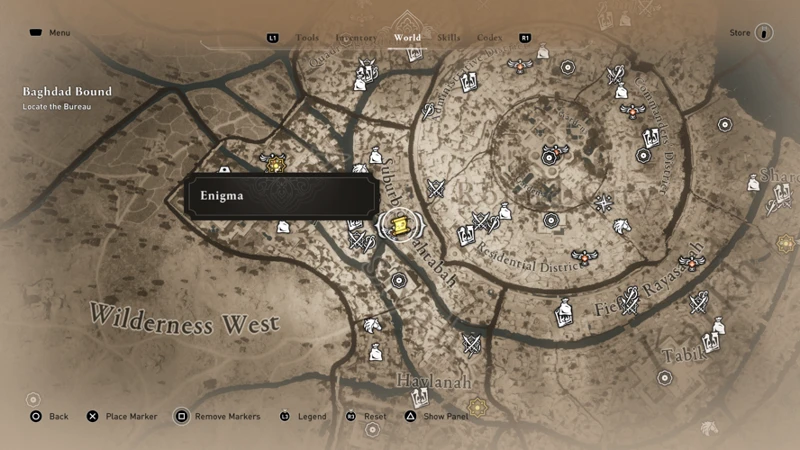
Enhancing your interpretation skills when it comes to reading natal charts is a continuous endeavor that can deepen your understanding and proficiency in astrology. One effective way to develop your skills is by studying case examples. Analyzing real-life natal charts and examining how different planetary placements, aspects, and house positions manifest in a person’s life can provide valuable insights and broaden your astrological perspective. By studying a variety of charts, you can gain a better understanding of the complexities and nuances involved in interpreting different astrological factors. Keeping a journal is another helpful technique for enhancing your interpretation skills. Take notes on your observations, insights, and predictions based on the natal charts you analyze. This practice allows you to track your progress, reflect on your interpretations, and make connections between astrological patterns and real-life experiences. Additionally, it’s important to stay open-minded and continuously educate yourself about astrology through books, articles, workshops, and discussions with experienced astrologers. The more you immerse yourself in the subject, the more your interpretation skills will develop and expand. So, embrace the opportunity to enhance your interpretation skills and explore the fascinating world of astrology.
Studying case examples
Studying case examples is an excellent way to enhance your interpretation skills when it comes to reading natal charts. By examining real-life examples and analyzing the astrological placements and aspects, you can deepen your understanding of how the different elements interact and manifest in a person’s life. One approach to studying case examples is to gather birth information from friends, family, or even public figures or celebrities. Choose individuals who have readily available birth data and gather their birth dates, times, and locations. With this information, you can generate their natal charts using astrological software or online resources. Once you have the charts, focus on analyzing the different components, such as the zodiac signs, houses, planets, and aspects. Pay attention to patterns, dominant elements, and significant placements. By comparing the natal chart with the individual’s life experiences and personality traits, you can start to identify correlations and gain insights into how astrology manifests in real life. Some online forums and communities also share case studies where experienced astrologers analyze natal charts, providing valuable insights and interpretations. Examining these case studies can offer different perspectives and approaches to reading natal charts. Remember to approach case examples with an open mind and to keep refining your interpretation skills over time. With practice and exposure to various case studies, you can expand your knowledge and become more proficient in interpreting natal charts in a meaningful and insightful way.
Keeping a Journal
Keeping a journal is a valuable practice for enhancing your interpretation skills when it comes to reading natal charts. By regularly documenting your observations, insights, and experiences with astrology, you can deepen your understanding of the intricacies and nuances of natal chart readings. When maintaining a journal, it is helpful to include details such as the date, time, and location of birth for the individual whose chart you are studying. Additionally, note any significant planetary transits or aspects that may be occurring at the time. Journaling allows you to reflect on your interpretations over time and track patterns or recurring themes that emerge in different charts. It is also beneficial to write down any case examples or examples from your own life that resonate with specific astrological placements or aspects. By incorporating these personal anecdotes and connecting them to the broader astrological framework, you can develop a more holistic approach to reading natal charts. Journaling serves as a record of your growth as an astrologer and allows you to refine your interpretations based on real-life observations and experiences. It provides a way to track your progress and refer back to previous insights as you continue to develop your skills.
Conclusion

In conclusion, understanding the basics of reading natal charts is a fascinating journey into the world of astrology. Natal charts provide a comprehensive snapshot of the celestial energies present at the time of birth, offering valuable insights into an individual’s personality, strengths, weaknesses, and life experiences. By interpreting the various components of a natal chart, such as zodiac signs, houses, planets, and aspects, astrologers can provide deep, meaningful insights into a person’s life path and potential. Whether you choose to explore natal charts for self-reflection, personal growth, or to gain a better understanding of others, the knowledge gained from studying these astrological maps can be truly enlightening. So, dive into the mysteries of astrology, explore the intricacies of natal charts, and open yourself to a world of cosmic wisdom and self-discovery.
Frequently Asked Questions

What is the importance of understanding natal charts?
Understanding natal charts can provide valuable insights into your personality, strengths, weaknesses, and life experiences. It allows you to gain a deeper understanding of yourself, your potential, and the energetic influences at play in your life.
How do natal charts differ from horoscopes?
Natal charts are unique to an individual and are calculated based on their specific birth date, time, and location. Horoscopes, on the other hand, are generic predictions based on the zodiac sign. Natal charts provide a personalized analysis of an individual’s astrological makeup.
Can natal charts predict the future?
Natal charts do not provide specific predictions about the future. Instead, they offer insights into the energies and potentials at play in a person’s life. The interpretation of these energies can help guide individuals in making informed choices and decisions.
What are the different components of a natal chart?
A natal chart consists of various components, including the Sun, Moon, planets, zodiac signs, houses, aspects, and more. Each component represents different aspects of an individual’s personality, character, and life experiences.
How can I interpret zodiac signs in my natal chart?
Zodiac signs in your natal chart represent different aspects of your personality and how you relate to the world. Each sign has specific qualities and characteristics that influence your behavior, emotions, and interactions with others.
What role do planets play in natal charts?
Planets in a natal chart represent different energies and areas of life. Each planet has specific meanings and influences that shape different aspects of an individual’s personality, such as their communication style, relationships, career, and more.
What are aspects in a natal chart?
Aspects refer to the angular relationships between planets in a natal chart. They reveal how different energies interact and influence each other. The aspects can indicate harmonious or challenging dynamics, which can provide valuable insights into a person’s strengths and challenges.
How can I calculate my natal chart online?
There are various free online resources that allow you to calculate your natal chart. You can enter your birthdate, time, and location on these platforms, and they will generate your personalized natal chart for you.
What is the role of an astrologer in interpreting natal charts?
An astrologer is a trained professional who specializes in interpreting natal charts. They can provide in-depth analysis and insights into your chart, helping you understand the complexities and nuances of your astrological makeup.
How can I enhance my interpretation skills for natal charts?
Studying case examples and keeping a journal of your observations and insights can greatly enhance your interpretation skills. By analyzing charts and noting patterns, you can develop a deeper understanding and intuition for reading natal charts.
References
- How to Read a Birth Chart, According to an Expert Astrologer
- How to Read an Astrology Chart: 10 Steps (with Pictures)
Frequently Asked Questions

1. What is the purpose of reading natal charts?
The purpose of reading natal charts is to gain a deeper understanding of an individual’s personality, potential, and life experiences by analyzing the positions and interactions of celestial bodies at the time of their birth.
2. Are natal charts and horoscopes the same thing?
No, natal charts and horoscopes are not the same thing. A natal chart is a personalized astrological snapshot based on an individual’s birth details, while a horoscope is a generalized prediction or forecast based on the positions of celestial bodies for a particular zodiac sign.
3. Can natal charts predict the future?
Natal charts provide insights into an individual’s character traits, strengths, and weaknesses, but they do not predict the future with certainty. They can instead offer guidance and valuable perspectives on potential life paths and challenges.
4. Do natal charts only focus on the Sun sign?
No, natal charts consider the positions of all celestial bodies at the time of birth, including the Sun, Moon, planets, and other astrological points. Each placement contributes to the overall interpretation, providing a more comprehensive understanding of an individual’s astrological makeup.
5. Can natal charts reveal compatibility between individuals?
Yes, natal charts can provide insights into the compatibility between individuals by comparing the placements of their celestial bodies. Certain placements and aspects can indicate areas of harmony, understanding, or potential challenges in relationships.
6. How can I generate my own natal chart?
You can generate your own natal chart using free online resources by inputting your birth date, time, and location. These resources use advanced algorithms to calculate the positions of celestial bodies at the time of your birth and generate a detailed chart.
7. What are aspects in natal charts?
Aspects in natal charts refer to the angular relationships between celestial bodies. They indicate how different energies interact with each other, influencing an individual’s personality, behavior, and life experiences.
8. What are the key placements to look out for in a natal chart?
The key placements to look out for in a natal chart include the Sun sign (representing the core essence), Moon sign (representing emotions and instincts), and Ascendant sign (representing the outer personality). These three placements provide a foundation for understanding an individual’s basic traits.
9. How can astrology beginners enhance their interpretation skills?
Astrology beginners can enhance their interpretation skills by studying case examples of famous individuals, observing patterns in natal charts, and keeping a journal to track personal observations and insights gained from studying astrological charts.
10. Do I need an astrologer to interpret my natal chart accurately?
While it is possible to interpret your own natal chart with the help of online resources, consulting with an experienced astrologer can provide a more accurate and nuanced interpretation. They have the expertise to analyze and integrate various astrological factors for a comprehensive understanding of your chart.
References
- How to Read a Natal Chart—Planets, Symbols, and All
- Natal Chart Interpretations For Beginners – Two Wander
- How To Read A Birth Chart In Minutes







